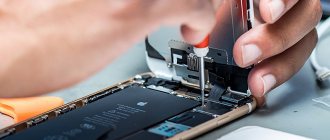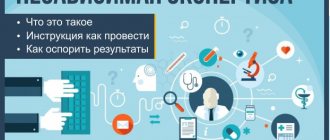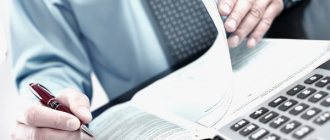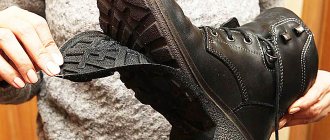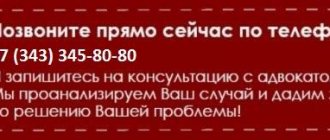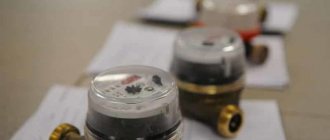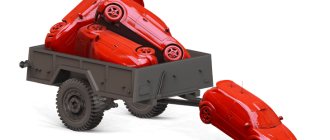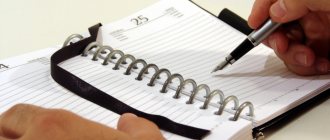EXAMINATION OF FURNITURE IN MOSCOW
The National Institute of Quality conducts an independent examination of furniture and furniture products in Moscow and the Moscow region.
We carry out examination of upholstered furniture, examination of built-in and cabinet furniture, examination of retail and office furniture, examination of industrial furniture, examination of medical furniture of varying complexity.
Furniture examination is carried out based on applications received from individuals and legal entities, judicial, law enforcement and government agencies in Moscow and the Moscow region.
ABOUT INDEPENDENT EXAMINATION OF FURNITURE AND FURNITURE PRODUCTS
Furniture examination is a special study of the quality of a product to determine its compliance with GOST or other standards.
A furniture examination allows us to determine the presence or absence of any defects in the furniture and establishes the cause of their occurrence.
An examination of the quality of furniture is carried out on the basis of an application from the seller or buyer of furniture or by a court ruling.
List of required documents
Typically, furniture is purchased under a sales contract, which specifies the following information:
- seller's location;
- furniture name, brand;
- a list of standards to which the product complies;
- manufacturer's address;
- Date of issue;
- basic technical parameters and consumer properties of the product;
- dimensions;
- color, material (base, finishing, upholstery, etc.);
- price and terms of purchase;
- delivery terms;
- guarantee period.
If the furniture has been repaired (including under warranty), or restored, the appraiser must submit documents related to these activities (contracts, acceptance certificates, work completion certificates, etc.).
For exclusive and designer furniture, you should attach a design project, a sheet of measurements, a specification that includes all the elements, their quantity, cost and article number.
In addition, the appraiser may find the following useful:
- sales and cash receipts;
- contract for the assembly or installation of furniture;
- financial and accounting documents (for legal entities).
If the customer is an individual, then to draw up an assessment report and, in fact, an agreement for the provision of assessment services, his passport data is required. For legal entities – constituent documents.
An exact list of required documents can be obtained during a free consultation, after the specialist has become familiar with the goals and objectives of the upcoming study.
SUBMITTING AN APPLICATION FOR AN EXAMINATION OF FURNITURE
To submit an application for furniture examination, please contact:
Moscow, Gilyarovskogo, 6 or by phone 8-800-7000-917 (calls from all phones in the Russian Federation are free).
For the convenience of customers, on this website you can create and send a preliminary application for examination of furniture through a special form.
In the future you will need to provide:
— personal passport for concluding an agreement for the provision of expert services (for individuals) or details (for legal entities).
— access to the subject of research;
— accompanying documents for the subject of research, for example: cash receipt and sales receipt, warranty card, operating instructions, labels (if available);
In what situations should you contact independent appraisers?
An independent assessment of the value of furniture listed on the balance sheet of state or municipal departments is carried out when making any transactions, in accordance with current legislation. Private and commercial property is assessed at the initiative of owners, interested parties, and in some cases at the request of judicial or investigative authorities.
Most often, the need to establish the current cost arises in the following cases:
- conclusion of a purchase and sale agreement;
- transfer of property as a gift (registration of a gift agreement);
- entry into inheritance rights (the value of the property affects the amount of the state fee for notary services);
- tax optimization;
- audit activities;
- property insurance (based on the appraiser’s calculations, the amount of monthly contributions is determined, as well as the maximum amount of compensation);
- contribution to the authorized capital (according to the law, property is contributed in the amount of its market value);
- placement and removal from balance;
- obtaining a loan secured by property;
- compensation for damage caused;
- pre-trial or judicial resolution of property disputes;
- division of property during divorce proceedings.
Very often, an appraisal examination is ordered in case of disagreements with the manufacturer or seller of furniture, especially in cases where the buyer was deliberately not informed about existing defects.
Our organization’s specialists are ready to evaluate both individual items (for example, a cabinet or a designer table) and all existing furniture (including as part of a comprehensive business assessment).
Examples of prices for sofa examination
On average, inspection of furniture up to 30,000 rubles costs from 4,000 to 5,000 rubles . Analysis of more expensive furniture costs twice as much.
Russian companies that perform sofa examinations offer their services at approximately the following prices:
- A sofa costing from 15,000 to 35,000 - from 5,000 rubles .
- Furniture from 35,000 to 40,000 rubles - from 7,000 rubles .
- A sofa purchased for 40,000-60,000 is 7,500-9,000 rubles .
- Product priced from 60,000 - from 10,000 rubles .
There is sometimes a fee for an expert visiting your home. An additional oral consultation costs about 3,000 rubles.
Stages of product examination
The process of preparing for and conducting a quality examination consists of several stages and it is important to know! features of each of them.
Accept claims and get free legal advice today!
Call: Moscow St. Petersburg +7 812 467-37-84Hotline in the Russian Federation 8 800 350-83-09 (free)
Solve the problem now - a correct and justified complaint is the key to success!
Preparing a written assignment
The basis for any examination is the written assignment of the customer.
Customers can be:
- individuals;
- legal entities;
- the examination may be carried out on the basis of a court order.
As a rule, the following requirements apply to the form and content of the assignment:
- the task is drawn up in any form;
- The assignment must state the circumstances of the situation, the number of the case in court (if the case is in court), as well as the questions that are being submitted for research.
Questions for examination
Before conducting an examination of the quality of a sofa, it is necessary to formulate the questions that the expert will answer.
if the examination is appointed by the court, then the final range of questions is determined by it, but the reasons for rejecting the question must be motivated by the court.
Basic rules for writing questions
- all questions must be understandable and not contain wording that allows them to be answered ambiguously or vaguely;
- it is necessary to compose several questions, but not too many - one answer may not clarify the situation, and too many questions can only confuse it;
- the questions drawn up must be related to each other - be interconnected; The expert’s answer to the first question should enable him to correctly answer the second, the answer to the second to the third, etc.
First question for the expert
It is advisable to first ask the following question to the expert:
Does the sofa have any disadvantages, and if so, what are they?
This formulation of the question will make it possible to determine the appropriateness of all subsequent actions.
Second question for the expert
In what period of time did each of the detected defects of the sofa arise or could have arisen? Are these periods of time related to the events that occurred with the product, including the transfer of the sofa?
You can almost always return an item! The main thing is to know the procedure and use the law correctly. Get information for free from lawyers via chat (bottom right ↘️) or via this link.
It often happens that it is simply not possible to determine the exact date of occurrence of a deficiency or the cause of such a deficiency. in such a situation, it is necessary to determine when the goods were transferred to the buyer.
Follow up questions
It is also advisable to ask the following questions, depending on the circumstances:
- about the nature of the defect (physical, chemical, mechanical, technological, etc.);
- about the volume of the defect;
- does the defect affect the operational and aesthetic properties of the sofa;
- whether the defect is of a manufacturing nature;
- could the defect in the sofa arise as a result of improper storage of products in the seller’s warehouse or during transportation from the manufacturer’s warehouse to the store;
- does the label contain the correct recommendation for use (in Russian);
- whether the defect could have arisen as a result of improper use of the product;
- Are technological standards observed during production, etc.
Submitting a written assignment
It is necessary not only to write the task correctly, but also to convey it correctly.
Each incoming task must be registered in a special journal.
Important!
Not all applications are accepted for execution. For example, if the product itself or the necessary documentation for it is missing. You must be notified of this, indicating the reasons.
Notification of interested parties
All interested parties have the right to participate in the examination and must be notified in advance of the examination.
At a minimum, you should notify:
consumer - if the examination is carried out on the instructions of the seller (authorized person); seller (authorized person) - if the examination is carried out on the instructions of the consumer.
The notification should indicate:
- time of examination;
- place of examination;
- name of the expert organization (full name of the expert).
Carrying out quality examination
The actual examination consists of several stages:
- the main stage, during which the sofa is subjected to various types of impact (mechanical, physical, other). The main purpose of the above actions is to determine the quality characteristics of the product.
- the final stage, during which all research results obtained are subject to systematization. The result of the final stage is the preparation of a report - an act.
Important!
The results of the examination must be documented in a special journal and approved by the signatures of the relevant specialists.
Consumer rights during the examination
During the examination of the quality of the sofa, the buyer has the right to:
- to ask questions;
- report your comments and demand that comments be included in the act;
- declare the need to add questions that arise during the examination.
Certificate of quality examination
Incorrect execution of a conclusion on a product examination can raise significant doubts about the professionalism of the expert and, as a consequence, be a basis for not accepting such an act as evidence. Therefore, it is important to know! primary requirements.
basic requirements when drawing up an expert opinion
The conclusion must include the following information:
- exact indication of the date and time of the beginning and end of the study;
- place for initial inspection of the sofa (if necessary);
- indication of the document that became the basis for the examination: consumer statement, court order, etc.;
- information about the organization and the specialist who conducted the study. (full name, patronymic and surname, information about education and acquired specialty, work experience as an expert, position);
- expert signature;
- questions in the wording set forth by the initiator of the examination. if an expert changes the text of a question, he must display the original version;
- a complete and comprehensive description of the product under study - a sofa, indicating the unique features that characterize it;
- photographic recording;
- a statement of the sequence of examination and research;
- analysis of data obtained during the study;
- an indication of the methods used to obtain the results;
- personal data of persons present during the examination;
- the conclusion should reflect an assessment of the data obtained and draw appropriate conclusions, which should be logical and justified.
Typical mistakes when drawing up a deed
- the time and place of the examination are reflected only, and not the entire time spent on the study;
- instead of full personal data - last name, first name and patronymic, only initials are entered;
- only the degree of education (“higher”) is indicated without decoding the educational institution and specialty according to the diploma;
- instead of data on the expert’s work experience, the total work experience is indicated; The description of the studies conducted to obtain answers to the questions posed is not reflected.
